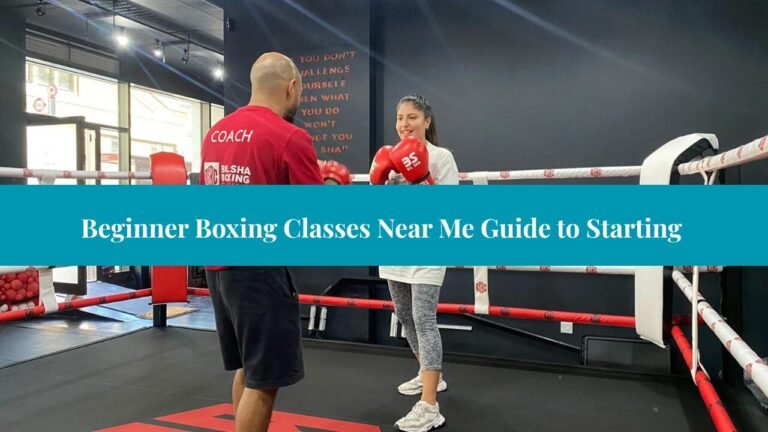Cardio boxing is a full-body fitness regimen that blends traditional boxing techniques with aerobic exercises. Unlike competitive boxing, cardio boxing focuses on fitness rather than fighting. It combines the cardio benefits of running or cycling with the strength-building advantages of resistance training.
A typical cardio boxing class includes shadowboxing, bag work using heavy and speed bags, pad drills with a trainer, high-intensity interval training (HIIT), core and stability exercises, and a final stretch and cool-down period. These classes usually last between 45 to 60 minutes and can be scaled to suit all levels of fitness, making them accessible for beginners and seasoned athletes alike.
The Health and Fitness Benefits of Cardio Boxing
Cardio boxing delivers total-body conditioning by activating your arms, shoulders, back, and core with every punch, while footwork and lower-body movement help develop strength and improve balance. The calorie burn is significant—an hour-long class can torch between 500 to 800 calories for a 150-pound individual, and even more with added resistance training or extra rounds.
Beyond physical benefits, cardio boxing also enhances cardiovascular endurance by working your heart and lungs through intense punch-rest intervals. The sport is also known to provide powerful stress relief, as punching a heavy bag can be a deeply cathartic experience. Many people experience improved mood and reduced anxiety due to the endorphin release triggered by high-intensity training. In addition, regular practice fosters increased confidence, better mental resilience, sharper reflexes, and enhanced coordination.
Who Can Benefit From Cardio Boxing?
Cardio boxing is inclusive and adaptable, making it ideal for people from all walks of life. Whether you’re a beginner new to fitness or boxing, an athlete cross-training for other sports, a busy professional looking for an efficient workout, or a senior interested in low-impact options, cardio boxing can be tailored to your needs. It’s especially effective for individuals aiming for weight loss or body toning. The scalability of the intensity means that anyone, regardless of age or fitness level, can safely participate and benefit.
What to Expect in a Cardio Boxing Class
A typical class starts with a warm-up involving dynamic stretching, jump rope, high knees, or jumping jacks to get your blood pumping. This is followed by a technique-focused segment where you’ll learn how to properly perform punches like jabs, crosses, hooks, and uppercuts, as well as fundamental footwork.
Once you’ve practiced technique, you’ll cycle through bag rounds, partner pad work, and shadowboxing. Conditioning circuits may include resistance-based exercises such as squats, lunges, plank holds, mountain climbers, or medicine ball throws. At the end, your instructor will lead a cool-down session with stretching to help reduce muscle soreness and improve flexibility.
How to Choose the Best Cardio Boxing Classes Near You
When searching online for “cardio boxing classes near me,” it’s important to assess the quality of the facility. A clean gym with modern equipment like heavy bags, gloves, and good ventilation is essential. Instructor credentials also matter choose coaches with certifications in boxing, personal training, or sports science from reputable bodies like ACE, NASM, or USA Boxing.
You should also evaluate the variety and flexibility of class offerings. Look for options like beginner-focused sessions, women-only classes, or time slots that fit your schedule, whether in the morning, at lunch, or after work. Online reviews on platforms such as Google, Yelp, or ClassPass can offer helpful insight into the gym’s reputation. For example, Rumble Boxing has earned an average rating of 4.9 stars from more than 250 reviewers.
Many gyms offer free trial classes or introductory weeks, giving you a low-risk opportunity to evaluate the class atmosphere and instructor expertise. When reviewing membership costs, compare different pricing models such as class packs or monthly subscriptions and ask about hidden fees or cancellation policies.
Real-World Success Stories
Jasmine, a resident of Los Angeles, underwent an impressive weight loss transformation after attending cardio boxing classes three times a week. Over the course of six months, she lost more than 40 pounds and attributes her success to the intensity of the workouts and the motivating community.
For Mark in Denver, the benefits were more mental than physical. After dealing with anxiety, he found that cardio boxing sessions acted like therapy. He describes feeling mentally lighter after every workout and developed a strong emotional outlet through consistent participation.
In another example, a law firm in New York introduced weekly lunchtime boxing classes in partnership with a local studio. The initiative improved employee focus, enhanced team bonding, and led to a noticeable reduction in sick days over a six-month period, proving that cardio boxing has corporate wellness potential as well.
Gear You Need for Class
While most gyms supply basic equipment for first-timers, investing in your own gear ensures a better and more hygienic experience. A quality pair of boxing gloves ranging from 12 to 16 ounces is recommended for fitness boxing. Hand wraps are essential for wrist protection, while breathable workout clothes and athletic shoes with strong grip will help with comfort and mobility. Don’t forget to bring a towel and a water bottle to stay fresh and hydrated throughout the session.
Safety Tips for Beginners
If you’re new to cardio boxing, wrapping your hands before putting on gloves is non-negotiable. Prioritize form and technique over power to minimize injury risks. Stay well-hydrated before, during, and after class. It’s also important to modify exercises based on your comfort and avoid pushing through sharp or unusual pain. Always communicate any existing injuries or physical limitations to your instructor so they can guide you with appropriate adjustments.
Cardio Boxing at Home
If you can’t find a local class or prefer working out from the comfort of your home, you can still enjoy cardio boxing with minimal gear. All you need is a pair of light dumbbells for resistance (optional), a smartphone or TV to stream YouTube or app-based workouts, and enough open space to move safely. Resistance bands can be added to increase the challenge. Apps like FightCamp and Boxx provide structured sessions with real trainers, giving you a studio-like experience at home.
Comparing Cardio Boxing with Other Workouts
When comparing cardio boxing to kickboxing, the key difference lies in the focus kickboxing integrates more leg techniques and martial arts elements, while cardio boxing emphasizes upper-body speed and rhythm. In contrast to standard HIIT workouts, cardio boxing incorporates skill development and coordination, which makes it more mentally engaging. While cardio boxing builds lean muscle and boosts endurance, pairing it with weight training is advisable for those looking to increase muscle mass significantly.
FAQs
What fitness level do I need to start?
No prior experience is required. Classes are typically scalable for all fitness levels.
Will I learn real boxing skills?
Yes. You’ll learn proper punch technique, footwork, and combinations used by real fighters, minus the sparring.
Can I lose weight with cardio boxing?
Definitely. Many participants report noticeable fat loss and muscle toning within weeks.
How often should I attend classes?
Two to three times per week is ideal for results, with rest or cross-training days in between.
What should I wear to class?
Wear breathable, flexible clothing and supportive athletic shoes. Avoid jewelry and tie back long hair.
Conclusion
Cardio boxing is more than just a fitness trend it’s a proven method to get in shape, build confidence, and relieve stress. Whether you’re looking to lose weight, tone your body, or simply try something new, this workout offers both physical and mental benefits.
With flexible class schedules, knowledgeable trainers, and a supportive community, cardio boxing is accessible to everyone. Find the best cardio boxing classes near me, sign up for a trial session, and punch your way to better health. Visit boxing essential to explore more.




